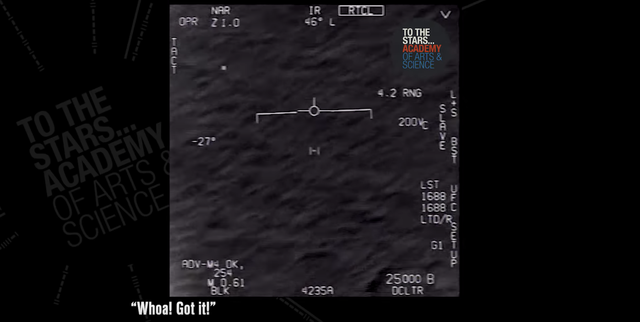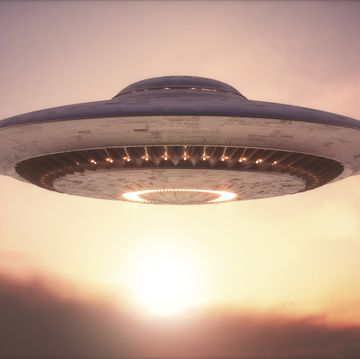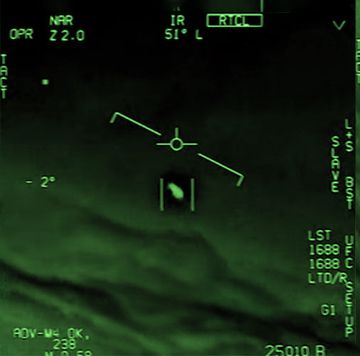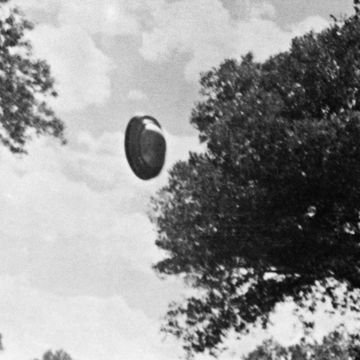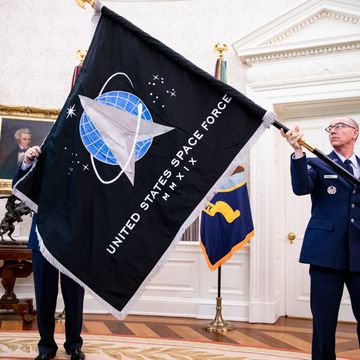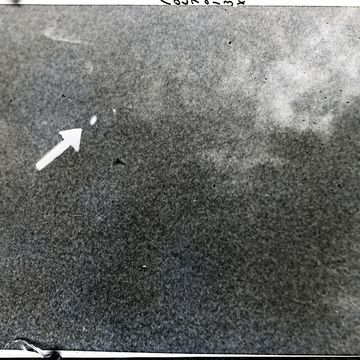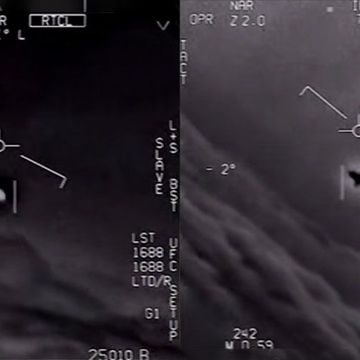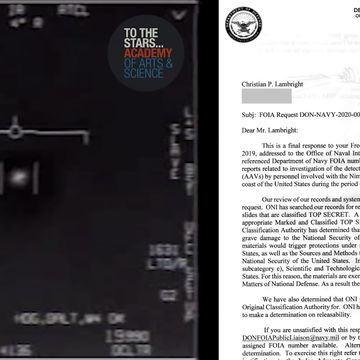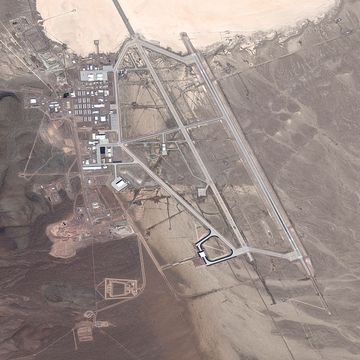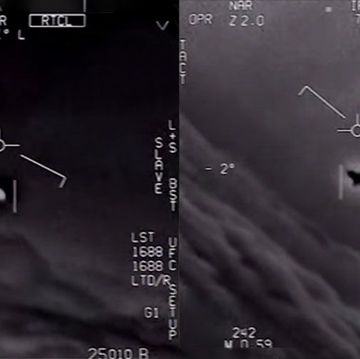- The U.S. Navy has confirmed three UFO videos released by a UFO organization are authentic Navy videos of "unexplained aerial phenomena."
- The UFOs were detected by a variety of means, including the human eye, infrared, and radar.
- There are at least two, maybe three types of craft, including one that was spotted underwater.
The U.S. Navy has officially confirmed that three leaked videos indeed show what the service calls “unexplained aerial phenomena” (UAP). The clips, taken by Navy pilots between 2004 and 2015, show objects that pilots claim performed aerial maneuvers and moved at speeds impossible for known aircraft to accomplish. Here’s everything we know about the objects.
So ... What Were Those Things?
First, there were at least two different UFOs/UAPs involved in the Navy sightings. In a 2017 New York Times interview, retired U.S. Navy Commander David Fravor said the flying object that he observed from the cockpit of his F/A-18F Super Hornet in 2004 was "around 40 feet long and oval in shape," and described it as similar to a Tic Tac.
Lieutenant Ryan Graves, another Super Hornet pilot, told the Times that the objects he saw in 2014 and and 2015 looked like a “sphere encasing a cube.” These sightings could be of two separate objects or a single object viewed from different perspectives.
Fravor also reported seeing a second object during his encounter that was the size of a Boeing 737 sitting just below the wavetops, with waves breaking over the top. Fravor spotted the Tic Tac-like object hovering over the larger UAP.
Meanwhile, Lieutenant Colonel “Cheeks” Kurth, another Marine Corps Hornet pilot, described seeing "a round section of turbulent water about 50 [to] 100 meters in diameter." Kurth called the area "whitewater," and said it "looked as if there was something below the surface like a shoal, or what he’d heard a ship sinking rapidly would look like," according to Fighter Sweep.
How Were the UFOs Spotted?
The objects were detected with a variety of means. Fravor and other pilots saw the UAPs with their own eyes, while the radar operators aboard the nearby guided missile cruiser USS Princeton observed the objects for “several weeks” with their SPY-1 radar system.
Fravor couldn't detect the craft with his APG-73 radar, but Graves was able to do so in 2015 with his new APG-79 active electronically scanned array radar. The APG-79 has increased sensitivity and processing power over the older radar system.
The three publicly released videos, nicknamed “FLIR1,” “Gimbal,” and “GoFast,” were all taken using the AN/ASQ-228 Advanced Targeting Forward-Looking Infrared (ATFLIR) pod. In “Gimbal,” the infrared pod clearly sees a “hot,” whistle-shaped object that pilots say is going against a 120 knot wind. Graves told the Times that the infrared sensor on his CATM-9 training missile also picked up the missile.
All in all, the objects were observed by multiple sensors per sighting: the naked eye, radar, and infrared, ruling out a sensor malfunction as the cause of the sightings. Fravor saw the objects with his own eyes, and they were also seen by the Princeton and the ATFLIR pods.
It may be possible that the ATFLIR pods malfunctioned and depicted objects that weren’t really there, but that makes less sense considering the objects were only detected in these three instances (that we know of) and are otherwise used on a daily basis. If there was a malfunction, why was it only when objects had already been detected by the human eye, radar, and other infrared detection systems?
What Do the UFOs Do?
The mystery craft pull off aerial maneuvers that are impossible for current, state-of-the-art aircraft to perform. According to Fravor, the USS Princeton told him it had been tracking objects for weeks that “appeared suddenly at 80,000 feet, and then hurtled toward the sea, eventually stopping at 20,000 feet and hovering. Then they either dropped out of radar range or shot straight back up.”
Graves, in describing his 2014-15 incidents, said the objects were known for “showing up at 30,000 feet, 20,000 feet, even sea level. They could accelerate, slow down and then hit hypersonic speeds.”
Graves also mentioned another feature the UAPs seemed to have that his own fighter did not: much more energy than one would expect for a small craft.
“These things would be out there all day,” Graves said. “Keeping an aircraft in the air requires a significant amount of energy. With the speeds we observed, 12 hours in the air is 11 hours longer than we’d expect.”
Finally, according to pilots in the “Gimbal” video, there were a “whole fleet” of whistle-shaped objects in the distance, not just the one in the ATFLIR video. The objects were apparently being picked up by their Super Hornet’s APG-79 radar system.
It’s important to stress that the Navy refers to the objects as “unidentified aerial phenomena.” That does not automatically mean they are spacecraft from another planet, or even some form of classified aircraft. These objects could be birds, drones, the result of equipment malfunctions, or any one of dozen or more things.
However, if we take what the men and equipment tell us at face value, the objects—whatever they are—are quite extraordinary.

Kyle Mizokami is a writer on defense and security issues and has been at Popular Mechanics since 2015. If it involves explosions or projectiles, he's generally in favor of it. Kyle’s articles have appeared at The Daily Beast, U.S. Naval Institute News, The Diplomat, Foreign Policy, Combat Aircraft Monthly, VICE News, and others. He lives in San Francisco.
